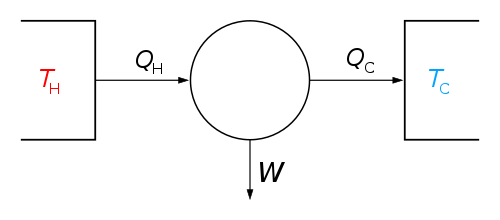Transcritical cycle
A transcritical cycle is a thermodynamic cycle where the working fluid goes through both Subcritical and supercritical states. This is often the case when carbon dioxide, CO2, is the refrigerant.
| Thermodynamics | ||||||||||||
|---|---|---|---|---|---|---|---|---|---|---|---|---|
 The classical Carnot heat engine | ||||||||||||
|
||||||||||||
| ||||||||||||
The modern transcritical cycle was developed in 1988–1991 by the Norwegian professor Gustav Lorentzen (1915–1995) and his team.[1]
References
- Shecco Synergies, Hydro, Oslo 2003. www.shecco.com
This article is issued from Wikipedia. The text is licensed under Creative Commons - Attribution - Sharealike. Additional terms may apply for the media files.